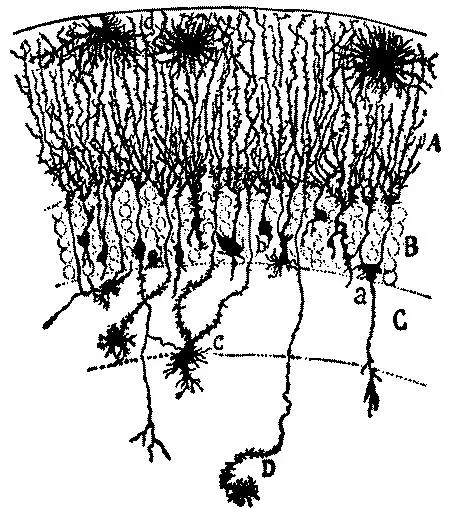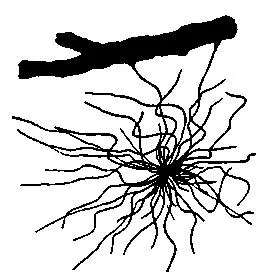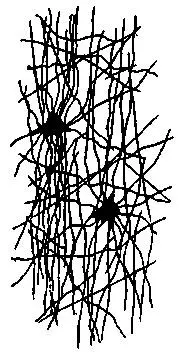James Walsh - Psychotherapy
Здесь есть возможность читать онлайн «James Walsh - Psychotherapy» — ознакомительный отрывок электронной книги совершенно бесплатно, а после прочтения отрывка купить полную версию. В некоторых случаях можно слушать аудио, скачать через торрент в формате fb2 и присутствует краткое содержание. Жанр: foreign_prose, psy_theraphy, foreign_edu, foreign_antique, на английском языке. Описание произведения, (предисловие) а так же отзывы посетителей доступны на портале библиотеки ЛибКат.
- Название:Psychotherapy
- Автор:
- Жанр:
- Год:неизвестен
- ISBN:нет данных
- Рейтинг книги:4 / 5. Голосов: 1
-
Избранное:Добавить в избранное
- Отзывы:
-
Ваша оценка:
- 80
- 1
- 2
- 3
- 4
- 5
Psychotherapy: краткое содержание, описание и аннотация
Предлагаем к чтению аннотацию, описание, краткое содержание или предисловие (зависит от того, что написал сам автор книги «Psychotherapy»). Если вы не нашли необходимую информацию о книге — напишите в комментариях, мы постараемся отыскать её.
Psychotherapy — читать онлайн ознакомительный отрывок
Ниже представлен текст книги, разбитый по страницам. Система сохранения места последней прочитанной страницы, позволяет с удобством читать онлайн бесплатно книгу «Psychotherapy», без необходимости каждый раз заново искать на чём Вы остановились. Поставьте закладку, и сможете в любой момент перейти на страницу, на которой закончили чтение.
Интервал:
Закладка:
Neuroglia Theory.—Ramon y Cajal elaborated a second theory of explanation for the mechanism of the nervous system that has seemed to many authorities in brain physiology much more satisfactory than Duval's theory of the actual motion of the neurons themselves. The Spanish nervous histologist had made a special study of the neuroglia or connective tissue cells in the central nervous system. These are very small in size but very numerous. Ramon y Cajal suggested that it was because the terminal filaments of these neuroglia cells inserted themselves between the neuronic filaments, thus insulating one from another, somewhat as if an insulating plug were inserted between two portions of an electric circuit, that the interruption of nervous currents took place. This explanation is free from many of the objections urged against Duval's theory.
The small size of the neuroglia cells makes it easy to understand how movement may take place in them sufficient to bring about separation of neurons. It would not be surprising if they should be more or less actively contractile. Whenever they contract, neuronic filaments which they have been holding apart, come together so as to permit the passage of nervous impulses, if any are flowing at the time. When the neuroglia cells become fatigued or seriously disturbed, they refuse any longer to obey the will in any way, or at least gradually get beyond control, and in their relaxation becoming prolonged, push neurons apart. When a man is very tired it gradually becomes impossible for him to keep awake. This is partly because poisons, produced in the course of fatigue, exhaust the vitality of the neuroglia cells and also of the neurons, so that less energy is required to push these latter apart.
It is easy to understand that the neuroglia cells might well become affected by the various narcotics and intoxicants in such a way as to produce the phenomena of anesthesia and drunkenness. The rapid recovery from anesthetics seems to indicate that it is not neurons, or essential nerve cells, that are so deeply affected, but some extraneous, and less important, mechanism within the brain. The neuroglia theory explains this very well and does away with the difficulty. Certain curious phenomena of hysteria are easily explained on this theory. When there is anesthesia in a member because of hysteria, this anesthesia does not follow the distribution of certain nerves, but is limited by a line in the shape of a cuff drawn round the limb. This indicates that the trouble is not peripheral but central, and that owing to psychic disturbance, all the neurons that receive sensory impulses from a particular portion of the body are so affected by a psychic condition that they are no longer capable of receiving impulses from the periphery. The neuroglia cells in a particular area have passed from the control of the will and, relaxing themselves, have inserted their processes between the terminal filaments of neurons, thus preventing conduction.

FIG. 15.—NEUROGLIA CELLS OR THE FASCIA DENTATA; IN THE NEW-BORN RABBIT (method of Golgi). A, molecular layer; B, granular layer; C, layer of polymorphis cells; D. horn of ammon; a. neuroglia cell furnished with a descending appendage; b, another neuroglia cell; piroform; c. a cell more deeply situated; d, spider cell; e, fusiform neuroglia cell. (Ramon y Cajal.)
Varieties of Neuroglia .—The connective tissue cells are of many kinds, each probably exercising a special function. Ramon y Cajal has described and pictured a special kind of neuroglia cells for the gray and another for the white matter. In his description of these cells he has pointed out many interesting diversities of form, and probably also of function. He has also described particularly a special form of neuroglia cells which lie close to the blood vessels. These he calls perivascular cells, and they seem to have an important function in regulating the amount of blood that goes to a particular part of the brain. He has written so clearly and yet so concisely with regard to these that it seems better to cite his own words: 14
Under the term neuroglia are included at least three kinds of cells,—those of the white brain substance, those of the gray substance, and the perivascular cells, which have been described by Golgi. The neuroglia cells of the white brain material are easily recognizable, being large and with rather prominent, smooth, and sharply outlined processes. As my brother seems to have shown, their object appears to be to furnish an insulating, or, at least, a badly conducting, substance to serve as an interrupter of nerve-currents. They certainly do not represent interstices of true nerve substance through which lymphatic fluid can conveniently find its way.
The neuroglia cells of the gray matter present a very special and highly characteristic appearance. They are of manifold form,—at times star-shaped, at times like a comet drawn out in length. These are the tall cells of von Retzius. They have very numerous prolongations, with a large number of short branched collaterals which give the whole cell the appearance of having feathers projecting from its periphery. These cells have been observed in two different conditions. One is that of relaxation, and the picture is that given above. The other is that of contraction, during which the cell body has more protoplasm in it, and the processes become shorter and thicker, and some of the secondary branches disappear entirely. These cells resemble, in certain ways at least, the pigment cells which occur in the skin of some animals. By means of their contractility, these pigment cells can stretch out their processes while in a state of contraction. It must be remembered that this form of neuroglia cells is most abundantly present in those parts of the brain in which it might be expected that a number of nerve currents would frequently come together. They occur, for example, with special frequency in the molecular layer of the cerebral cortex, where the bundle of pyramidal fibers, with their immense number of terminal nerve-endings, come in contact with one another.

FIG. 16.—NEUROGLIA CELL FROM THE SUBCORTICAL LAYER OF THE CEREBRUM FROM WHICH TWO PROCESSES GO TO A BLOOD VESSEL (Obersteiner).

FIG. 17.—NEUROGLIA CELLS FROM THE SPINAL CORD. Longitudinal section (Obersteiner).
The third form of neuroglia cells consists of those known as the perivascular cells. They are found only in the neighborhood of the capillaries of the gray matter and they send one or more firm prolongations to the outer surface of the endothelium of the blood vessels.
These processes are inserted in the walls of the blood vessels. Every capillary has thousands of these little pseudopod prolongations, and from the vessel the cell reaches out in a number of directions. The object of these cells undoubtedly is by contraction of the prolongations to bring about local dilatation of the blood vessels. This dilatation of the blood vessels causes greater or less intensity of the psychical processes in certain parts of the brain, because of the greater or less congestion of the circulation in a part which it produces.
With the exception of these last cells the object of the neuroglia cells is to insulate nerve fibrils and cells from one another. When the cells are relaxed, the passage of a nerve current is either entirely prevented or rendered much less easy than before. It is in this way that the true nature of intellectual rest is explained. Sleep—not only natural sleep, but also artificial narcosis, such as is produced by narcotics, hypnotics or hypnotization—is evidently the result of the same conditions.
Читать дальшеИнтервал:
Закладка:
Похожие книги на «Psychotherapy»
Представляем Вашему вниманию похожие книги на «Psychotherapy» списком для выбора. Мы отобрали схожую по названию и смыслу литературу в надежде предоставить читателям больше вариантов отыскать новые, интересные, ещё непрочитанные произведения.
Обсуждение, отзывы о книге «Psychotherapy» и просто собственные мнения читателей. Оставьте ваши комментарии, напишите, что Вы думаете о произведении, его смысле или главных героях. Укажите что конкретно понравилось, а что нет, и почему Вы так считаете.












